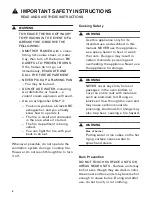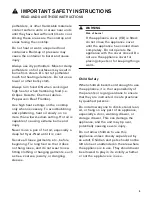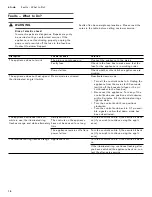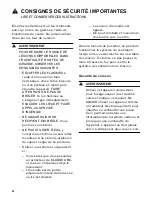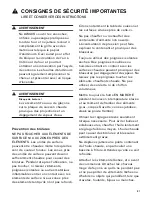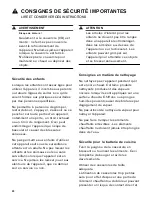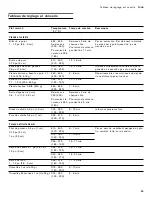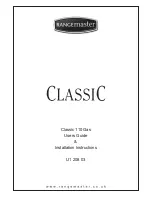
14
en-us
Cleaning and maintenance
Tips for cooking and roasting
▯
Only put on the food once the heating indicator has
gone out. This also applies to raising the temperature
between two preparations.
▯
Press the meat, poultry and fish pieces flat onto the
frying surface with the spatula. Only turn them once
they can easily be removed from the surface, in order
to not destroy the fibers. Otherwise fluid can come
out, which causes the food to dry out.
▯
Meat, poultry and fish pieces shouldn't touch each
other during frying so that they don't absorb any
liquid.
▯
Don't pierce or cut meat prior to or during cooking, in
order to prevent meat juice from escaping.
▯
Don't salt meat, poultry and fish prior to frying, in
order to prevent the extraction of water and soluble
nutrients.
▯
Fish fillet can be rolled in flour (floured) prior to
frying. This prevents it from sticking as much.
▯
Only turn fish fillet once if possible. First fry it on the
skin side.
▯
Only use oils and fats that can be heated up hot and
are suitable for frying, e.g. refined plant oils or
concentrated butter (clarified butter).
Using the with Teppan Yaki with
cookware
You can also use the Teppan Yaki to cook with cookware.
Cooking methods that require little heat input can be
used to do this. You can heat food quickly on the hob
first, if required, before continuing cooking on the
Teppan Yaki.
Approx. 140 °C is best for melting, defrosting, and
keeping food warm. 160–200 °C is best for soaking rice
and cereals, and for heating small quantities of food.
Use heat-resistant cookware with a lid. Take care not to
scratch the stainless steel frame accidentally when
placing the cookware on the heating surface. Please note
that if the cookware is smaller than the surface being
heated, this is not an energy-efficient cooking method.
Cleaning and maintenance
Cleaning and maintenance
9
WARNING
Risk of electrical shock!
Moisture entering the appliance can cause an
electrical shock. Don't use a high-pressure cleaner
or steam cleaner.
9
WARNING
Risk of burns!
▯
The appliance grows hot during operation. Let
appliance cool down prior to cleaning.
Risk of burns!
▯
The accessible parts get hot during operation.
Never touch hot parts. Keep children away.
Risk of burns!
▯
Pouring water or ice cubes onto the hot frying
surface produces splashes and steam. Do not
bend over the appliance. Keep a safe distance.
NOTICE
Surface damage
Do not use these cleaning agents
▯
Caustic or corrosive cleaners
▯
Oven cleaners
▯
Cleaners that are caustic, contain chlorine or are
aggressive
▯
Cleaners containing large proportions of alcohol
▯
Hard, scratchy dish-washing sponges, brushes or
scourers
If such an agent comes into contact with the appliance,
wipe it off immediately with water.
Thoroughly wash out new sponge cloths before using
them.
Cleaning the appliance
Clean the appliance after each use once it has cooled
down. Burnt-on residues can be difficult to remove.
Remove the worst of the residue with the spatula.
Carefully remove cleaner residues before next using the
appliance.




